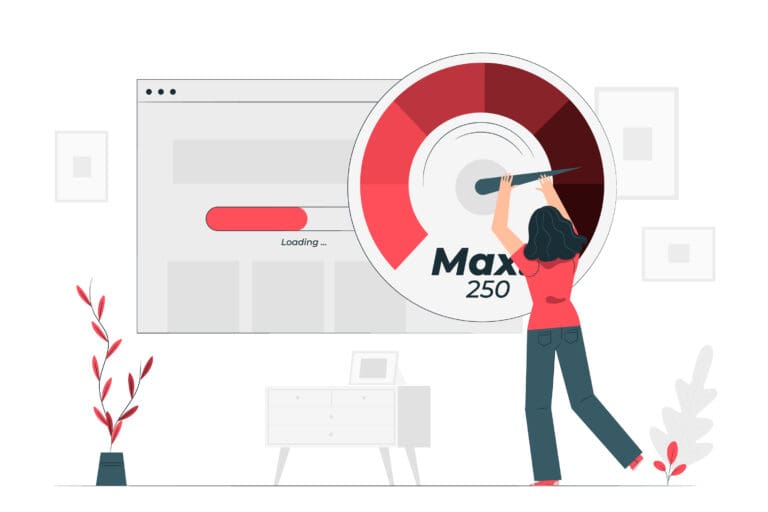Learn How Optimizing Mobile Speed Through SEO Can Enhance User Experience and Increase Sales
TL;DR:
- Problem: When websites often struggle with slow loading times on mobile devices, it often prompts users to promptly close the site and exit, resulting in a missed opportunity for engagement.
- Solution: FlyingPress optimizes sites with features such as caching, CSS, JavaScript tweaks, many in autopilot way, and more.
- In Sum: Using FlyingPress settings, websites can boost speed, enhance user experience, pass Core Web Vitals, and rank higher.

In today’s world, where smartphones are as common as keys and wallets, the speed at which websites load on mobile devices is more important than ever. When you’re on your phone, waiting for a page to load can feel like an eternity.
This is where search engine optimization plays a crucial role. SEO isn’t just about getting your website to the top of search results. It’s also about ensuring your site works fast and efficiently on mobile devices.
We’ll dive into why mobile speed matters and how SEO can help make websites faster and more enjoyable for users. We’ll explore strategies to turn a sluggish mobile site into a quick-loading page, enhancing the experience for everyone who visits.
What’s Mobile Speed and SEO?
Mobile speed refers to how quickly a website loads and becomes usable on a mobile device such as a smartphone or tablet.
In a fast-paced world, no one likes to wait, especially online. People often give up and go elsewhere if a website takes too long to load on a phone. That’s why mobile speed and a responsive design are a big deal for any site. A tool such as FlyingPress can help enhance Core Web Vitals and be particularly effective in this regard.
SEO is like a toolkit to make websites more noticeable and faster online. It involves techniques that help sites load quickly on phones when used for mobile speed. This includes making images smaller in size but still clear, simplifying web page designs, and ensuring the website works well on different phone screens.
Quick-loading websites on mobile devices significantly enhance user engagement. This swift access is crucial, not solely for attracting visitors through SEO but also for ensuring a seamless and rapid browsing experience. Such efficiency is instrumental in maintaining visitor interest and potentially increasing overall engagement, regardless of the website’s purpose.
The Impact of Mobile Speed on User Experience
When people don’t want to wait and go to another website to find a solution to their problem, it is called a ‘bounce.’ High bounce rates are bad news for sites because it means people aren’t sticking around.
On the other hand, a site that loads quickly on mobile devices makes visitors happy. They can find what they need without any annoying waits. This positive experience keeps users engaged and increases the likelihood that they will spend more time exploring various pages on the website.
Moreover, this increased engagement makes it more probable that they will achieve the desired outcomes, whether it’s a return visit, a purchase, or another specific goal.
There’s a clear link between how fast a site loads on phones and how satisfied visitors are. Fast-loading sites make people more likely to buy something from your website and even recommend it to others.

Strategies for Enhancing Mobile Speed
You can use several SEO strategies to ensure your website loads quickly on mobile devices. Here’s a breakdown of some effective techniques:
- Image optimization: Large images can slow down your site. By reducing their file size without losing the quality, your pages will load faster. Use tools that compress images and choose the right format, such as JPEG for photos and PNG for graphics.
- Minimizing code: By simplifying the CSS and JavaScript code on your site, you can eliminate unnecessary characters and spaces, making the code more streamlined and quicker to load. Numerous tools are available that specialize in optimizing code by removing these extraneous elements, thus enhancing efficiency and speed.
- Leveraging browser caching: This technique allows users’ browsers to store parts of your site so that it doesn’t have to load everything from scratch again when they revisit. This method reduces loading times significantly.
- Responsive web design: A responsive website adjusts automatically to fit any device’s screen size. This is essential for mobile speed because it ensures the site loads efficiently on both phones and tablets.
- Accelerated Mobile Pages (AMP): AMP is a technology developed by Google to help mobile pages load faster. It strips down the code to essentials, enabling quicker load times. This is especially useful for content-heavy sites such as news or blogs.
Mobile Speed’s Role in Increasing Sales
Fast mobile speed is like a key that opens the door to better sales. When a website loads quickly on a phone, it makes for a smoother visit. People can find what they’re looking for without waiting, leading to a better overall experience. This often results in more people buying products or signing up for services, which are actions known as conversions.
Many businesses have seen clear benefits after making their mobile sites faster. For instance, a retail company might notice more people signing up or spending more time on their site once it loads quicker. These changes aren’t just luck since they result from better mobile speed.
Balancing rich content, such as videos and high-quality images, with fast load times is crucial. It’s about finding the sweet spot where your site looks good and feels lively but doesn’t take too long to load. Using optimized images and efficient coding practices are ways to achieve this balance, ensuring visitors stay engaged and are more likely to make a purchase.

Measuring and Monitoring Mobile Speed
Google PageSpeed Insights is a useful tool for monitoring how fast your mobile site loads. It lets you check your website’s speed and give tips on how to make it faster. You need to check your site’s speed regularly, not just once.
Websites change over time, so you might add new features or update content. Regular checks help you make sure your site always loads quickly for visitors.
By using tools such as the Chrome User Experience Report (CrUX), you can monitor and enhance your site’s performance effectively. This resource provides a historical view of critical metrics, helping you to maintain a smoothly running site and ensure visitor satisfaction.
Closing Thoughts
Combining SEO with fast mobile speed is crucial to making users happy and boosting sales. A speedy, easy-to-use mobile site keeps visitors around longer and encourages them to return and even buy something.
Focusing on mobile speed is crucial to a successful SEO strategy for businesses. It’s not just about climbing search rankings but creating a positive experience that turns visitors into customers.
If you want to enhance your website’s mobile speed, Actlys is here to help. Our expertise in optimizing mobile performance can transform your site, making it a go-to destination for your customers.







